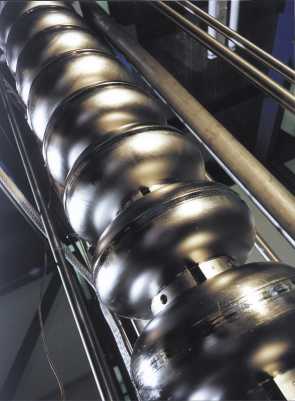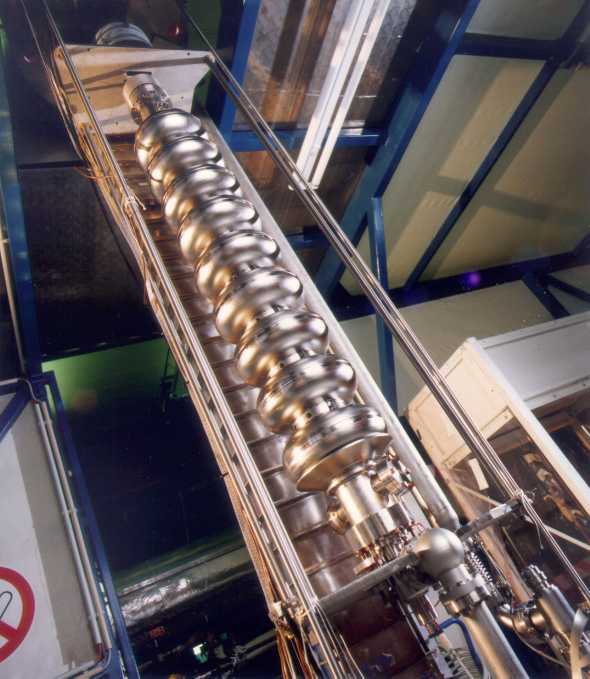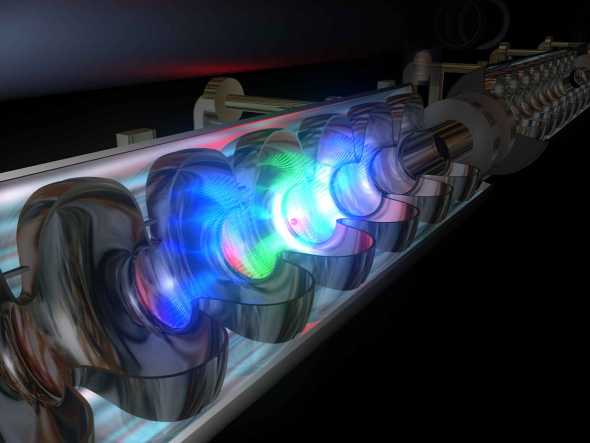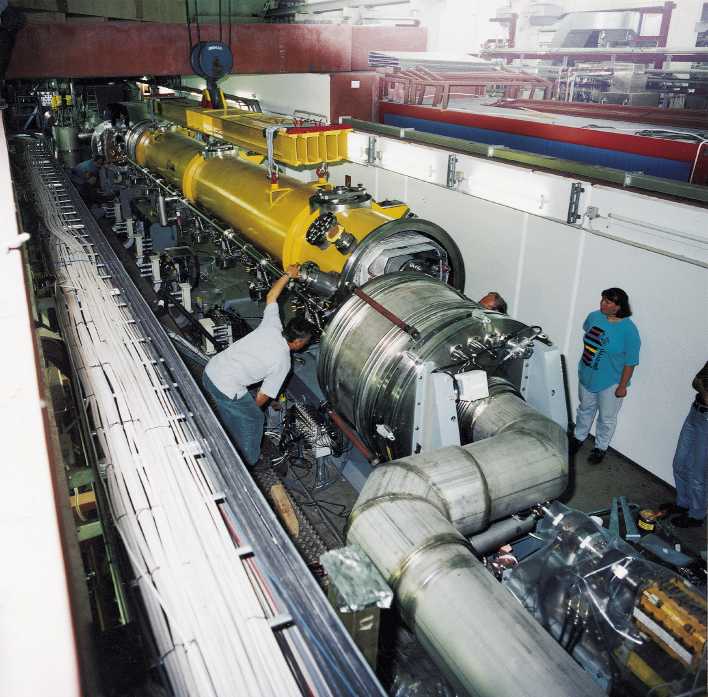
Welcome to the Tesla Memorial Society of New York Website
Written by Dr. Ljubo Vujovic and Dr. Mihailo Rundo

TESLA
technology
Accelerator structures of niobium, so called resonators, are components of
superconducting linear accelerators. (Source: DESY Hamburg)
Tesla facility in Hamburg, Germany - Superconducting Electron-Positron Linear Collider
Our civilization is entering a new era in particle physics exploration. The new era has begun and scientist will find out how materials behave at the atomic level. The high collision rate for the accelerated particle can now be achieved and new technology and new sources of energy are emerging.
The super conducting Tesla accelerator technology at Hamburg, Germany creates ideal conditions for a unique light source: a free electron laser producing x-ray radiation with laser properties. This new light source will open up a whole new range of new perspectives for the science. It will also offer opportunities for industrial uses.
There are many synchrotron radiation sources being constructed around the world, one of them is the Tesla facility in Hamburg, Germany. The new era has begun.

TESLA
technology
Accelerator structures of niobium, so called resonators, are components of
superconducting linear accelerators. (Source: DESY Hamburg)
Tesla facility in Hamburg, Germany
This is a giant project developed in international collaboration. The Tesla facility consists of electron sources, a superconducting acceleration section and an arrangement of magnets in which the accelerated electrons are induced to produce flashes of x-ray laser light. The Tesla facility compromises a 33-kilometer long linear accelerator tunnel which will bring electrons into collision with their anti-particles - the positrons.
The linear accelerator tunnel, 33 kilometers long with 5 meters diameter, lies 20-30 meters below the earth's level. The tunnel starts at DESY Headquarters in Hamburg and goes straight north.
The high energy particles collision will allow physicist to take a closer look at the structure and origin of matter and the Universe. The particles will collide head-on in the middle of the 33 kilometer-long Tesla Tunnel. The reaction will produce an extremely broad variety of elementary particles to be studied by scientists and a unique light source production.

TESLA
acceleration
In a resonator electromagnetic fields accelerate the electrons. (Source:
DESY Hamburg)
Tesla Innovation Superconducting Technology
The work associated with the Tesla project led to significant advances in high-frequency super conducting technology.
As soon as the metal nobium is cooled to below minus 264 degrees Celsius it loses its electrical resistances and conducts current without any energy loss. In the subterranean Tesla Tunnel, 33 kilometers long in Hamburg, the accelerator section is made superconductive by cooling them to a temperature of minus 271 degrees Celsius along the entire accelerator length. The advantage of the superconducting technology is to minimize the power losses in the collision of particles and the production of energy.
The new era of synchrotron radiation sources has begun. This will have tremendous impact in chemistry, physics, medicine and the quality of our life. There are many synchrotron radiation sources being developed today. Swiss Light Source, the United Kingdom and France have made decision to build two shortage rings Diamond and Soleil. In Shanghai China, an advanced source is designed as well as in Australia, etc. In Grenoble, France the synchrotron is already operating. The TESLA Test Facility in Hamburg will start operating in six years.

TESLA
test facility
These yellow tubes conceal the superconducting accelerator structures that
are cooled down to minus 271 degrees Celsius. (Source: DESY Hamburg)
Search Google for "Tesla Facility in Hamburg"